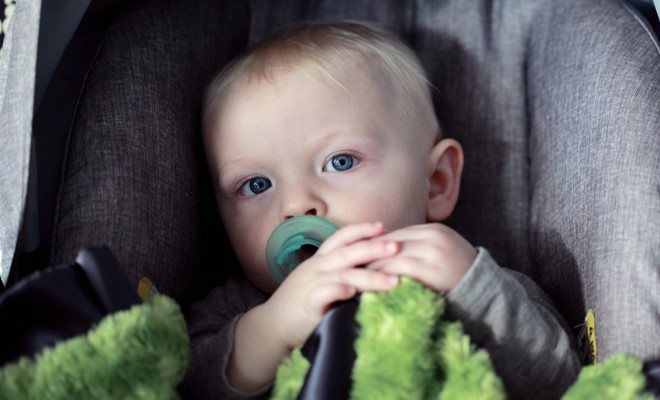Hot tips for summer safety - car seat safety and your baby

As the summer holidays approach, and road trips become a regular part of your plans, let’s gear into crucial information on keeping your little ones safe during car journeys.
Red Nose Chief Midwife, Loren Rushton, is here to share the latest research and insights on car seat safety to ensure a secure and comfortable ride for your family.
1. Proper Fitting Matters
When it comes to car safety, your child’s car restraint must be fitted correctly. Recent studies highlight that improperly fitted car seats significantly increase the risk of serious injuries. Anecdotal evidence suggests that over 70% of child car restraints are incorrectly fitted or used. Child car restraints that are incorrectly fitted pose a serious safety risk to children travelling in those restraints.
Take a moment to ensure your child’s car seat is not only safe but also properly secured:
- Check that the car seat is the right size for your child.
- Confirm it’s correctly fitted to your vehicle.
- Ensure all straps and buckles are properly adjusted and fastened.
- Verify that it meets Australian safety standards (AS/NZS 175).
For guidance visit Safe Seats, Safe Kids to access their free parent e-learning tool to guide you on choosing, installing, adjusting your child’s car restraint. Or click here to find out more.
2. Second-Hand Caution
When considering the use of second-hand child car restraints or car seats, exercise caution and prioritise safety. The latest research underlines the importance of a thorough inspection. Ensure the car seat is less than 10 years old from the date of manufacture, has never been in a crash, and comes with all parts and instructions. Additionally, conduct a meticulous examination to confirm it is in good condition—free from splits, cracks, or stress marks on the shell, and with no frayed, worn, or damaged straps. Pay special attention to the buckle, ensuring it’s in perfect working order. Never use a car seat that has been involved in a car accident, as recent findings suggest the device’s integrity could be compromised, even if it appears undamaged.
3. Inclined Sleeping and Overheating Risks
Recent studies shed light on the risks associated with inclined sleeping in car seats. While it might be convenient to let your baby nap in the car seat, prolonged periods of sleep in a curved position can increase the risk of slow suffocation. It is imperative to take breaks during long journeys, allowing your baby to stretch and breathe.
- Car seats are designed for car travel, not prolonged sleeping.
- Be cautious of overheating risks, as temperature inside cars can rise rapidly, up to 30 degrees Celsius higher than the outside temperature, significantly increasing the risk of Sudden Unexpected Death in Infancy (SUDI).
Watch the Kids Safe video here on car temperatures.
After the car journey, ensure to remove your baby from the car seat or capsule, even if it means waking them. This reduces the risk of potential breathing issues caused by an infant’s neck flexing forward into a chin-to-chest position while sleeping.
4. Supervision is Key: Never Leave a Baby Unattended
Research underscores the importance of supervising a sleeping baby in a car seat. Monitoring airflow, temperature, head/airway position and maintaining a sleep environment smoke free with no loose objects is key. See Red Nose’s 6 Safe Sleep recommendations for more information.
It is illegal in most states and territories in Australia to leave a child unattended in a vehicle.
The latest information emphasizes that babies should never be left alone in the car, even for a short period. Unforeseen circumstances can arise, making constant supervision crucial for your baby’s safety.
In summary:
Stay informed and keep your summer drives cool and safer with Red Nose. For more in-depth information on car seat safety, go to our Education Resources or access more information from the links below.
References:
https://www.kidsafevic.com.au/road-safety/child-restraints/child-restraint-laws
https://www.betterhealth.vic.gov.au/health/healthyliving/child-safety-in-the-car
https://raisingchildren.net.au/preschoolers/safety/car-pedestrian-safety/child-restraints
